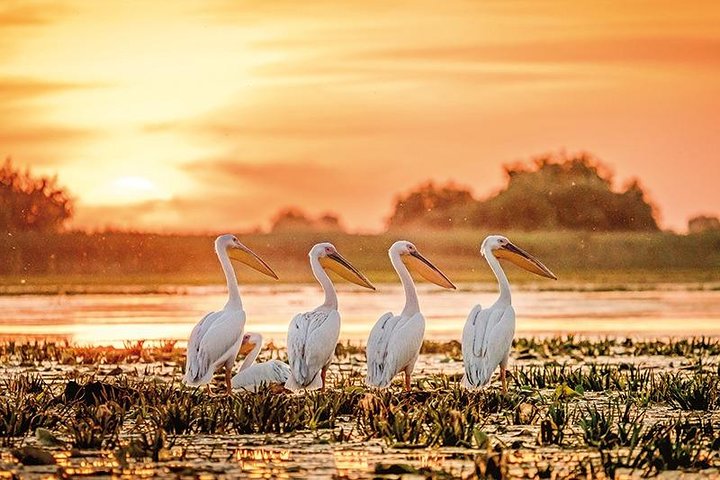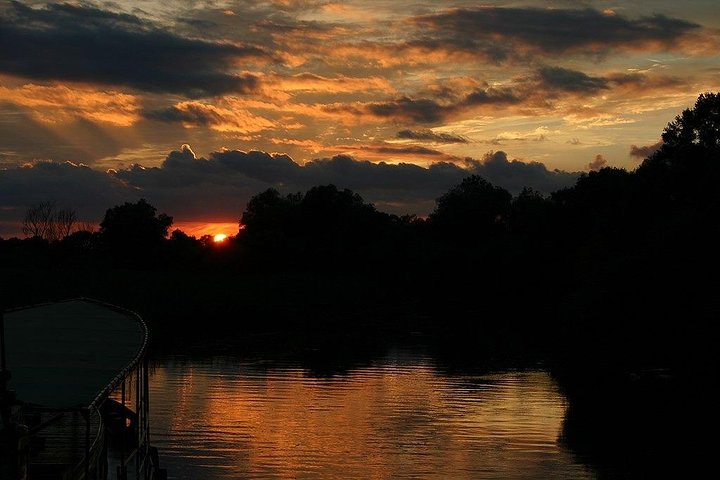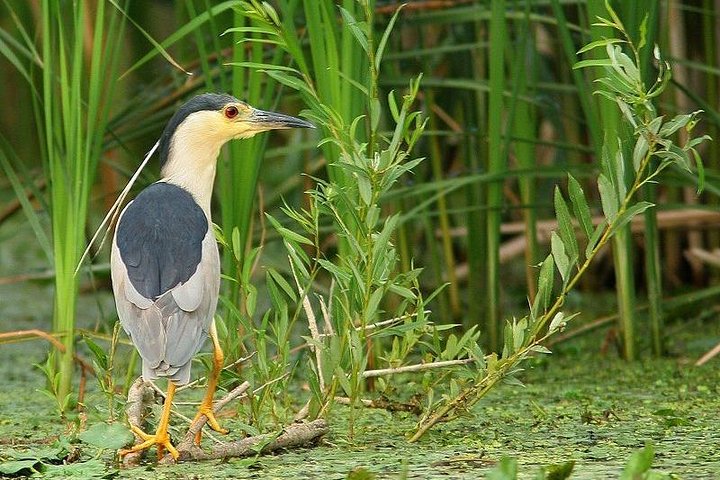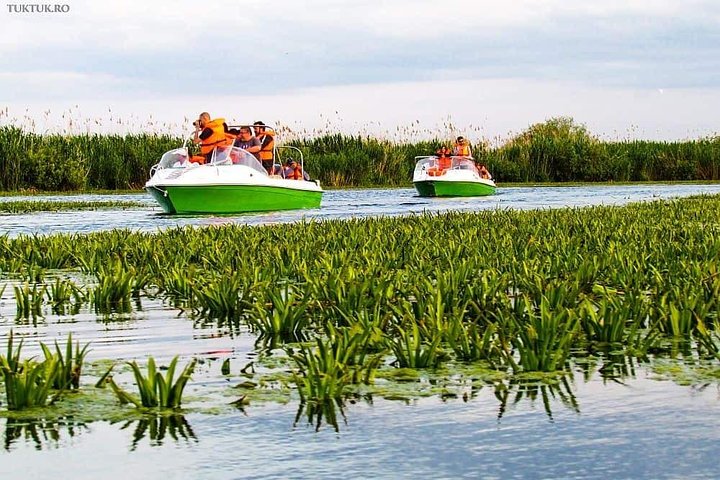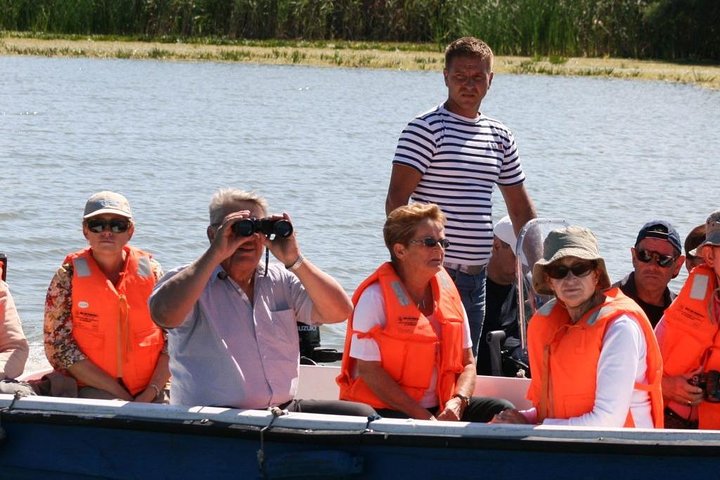The Danube Delta Biosphere Reserve is recognized globally for its rich ecosystem and is designated as a UNESCO World Heritage Site. This Delta is a haven for birdwatchers, with over 300 bird species documented. In terms of biodiversity, it ranks third in the world, following Australia’s Great Barrier Reef and Ecuador’s Galapagos Islands.
The Danube Delta Biosphere Reserve is recognized globally for its rich ecosystem and is designated as a UNESCO World Heritage Site. This Delta is a haven for birdwatchers, with over 300 bird species documented. In terms of biodiversity, it ranks third in the world, following Australia’s Great Barrier Reef and Ecuador’s Galapagos Islands.
Bucharest to Tulcea
Tulcea County - Central Eco-Tourism Museum of the Danube Delta
Top choice museum in Tulcea
This museum and aquarium combination offers an excellent introduction to the delta’s diverse flora and fauna. The main floor features stuffed animals, while the lower level houses a small yet captivating aquarium, with plenty of English…
Bucharest to Tulcea
Tulcea County - Central Eco-Tourism Museum of the Danube Delta
Top choice museum in Tulcea
This museum and aquarium combination offers an excellent introduction to the delta’s diverse flora and fauna. The main floor features stuffed animals, while the lower level houses a small yet captivating aquarium, with plenty of English signage. It’s highly recommended for families traveling with children to enhance their visit.
Tulcea - Tulcea (pronounced Tool’cha) is a historic city in the Dobrogea region of Romania and serves as the administrative center of Tulcea County. With a population of approximately 92,000, it has been a significant harbor since ancient times, marking the end of the Danube River’s journey through Europe as it flows into the Black Sea, forming the renowned Danube Delta. The city has experienced Byzantine (5th - 7th century), Genoese (10th - 13th century), and Ottoman rule before reuniting with Romania in 1878.
Tulcea is most vibrant in August and December, during its regular festivals: the International Folk Festival of the Danubian Countries, held in odd-numbered years, and an annual winter carnival.
The local Lipovani Russian and Turkish minorities contribute to the city’s multicultural atmosphere.
Sulina -
Today, Sulina stands as Romania’s easternmost port. It is easily located on any world map by tracing the Danube’s course to where it meets the sea. At this river’s end, on a narrow strip of land, a community settled and thrived, earning their town a notable reputation.
Letea Forest Boat Tour in the Beauty of Danube Delta
Letea Forest - Featuring wild horses, vines, 700-year-old oak trees, and sand dunes, Letea is the world’s northernmost subtropical forest. Hidden from the usual tourist paths, the forest holds many secrets. To reach it, one must navigate through numerous canals adorned with water lilies. As you approach, you’ll notice the fishermen’s boats and the church tower in the village. The residents of Letea are primarily Russians, while those in the nearby village of CA Rosetti are Romanians, and in Periprava, Lipovans.
Many locals believe the village was built on land that once lay beneath the sea, which rose to the surface long ago. A local legend even tells of a ship found beneath the dunes, with only the mast’s top visible. While the tale is enchanting, the Danube Delta’s formation is somewhat different.
Sulina Beach - Sulina is a town and free port in Tulcea County, Dobrogea, at Romania’s eastern edge, where the Danube Delta meets the Black Sea at the Sulina branch. It has a population of 4,601. Sulina is not connected to Romania’s road network and can only be accessed by water via the Danube or Black Sea.
Danube Delta - The Danube River is the most international river globally, crossing or forming borders with several countries: Germany, Austria, Slovakia, Hungary, Croatia, Serbia, Romania, Bulgaria, Ukraine, and four capitals: Vienna, Bratislava, Budapest, and Belgrade. Formed over more than 10,000 years, the Danube Delta continues to expand due to the 67 million tons of alluvium deposited annually by the Danube River.
» The Delta is structured around the Danube’s three main channels, named after their respective ports: Chilia (north), Sulina (middle), and Sfantu Gheorghe (south).
» The Danube Delta Biosphere Reserve boasts the world’s third-largest biodiversity (over 5,500 species of flora and fauna), surpassed only by Australia’s Great Barrier Reef and Ecuador’s Galapagos Archipelago.
» The Danube Delta hosts over 60% of the world’s pygmy cormorants (Phalacrocorax pygmeus), 50% of red-breasted geese (Branta ruficollis), and the largest populations of white pelicans (Pelecanus onocrotalus) and Dalmatian pelicans (Pelecanus crispus) in Europe.
» It also contains the world’s largest reed bed expanse – 625,000 acres / 240,000 ha.
» Approximately 15,000 people reside in the Delta area, living in 28 villages and one city (Sulina).
» The area was first documented by Herodotus of Halicarnassus (484 – 425 B.C.).
» More than half of the Delta Biosphere Reserve remains virtually untouched.
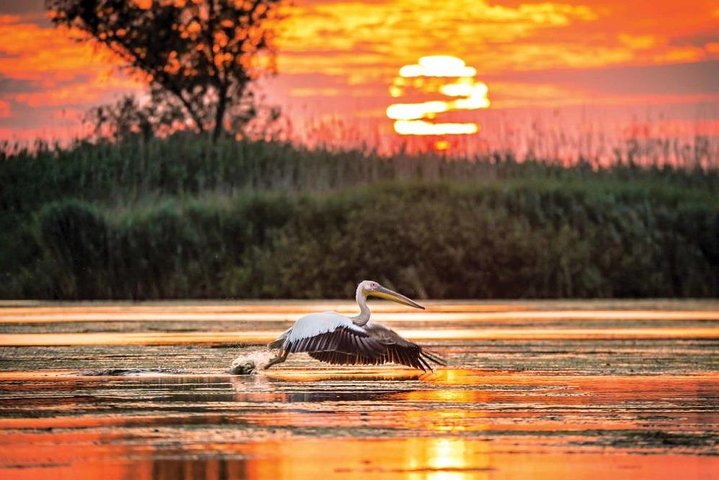
- Travel guide
- Private transportation
- Speed boat transfer
- Horse cart from Letea Village to Letea Forest
- Traditional fish lunch at Letea Village
- Sulina Tour and beach session
- Travel guide
- Private transportation
- Speed boat transfer
- Horse cart from Letea Village to Letea Forest
- Traditional fish lunch at Letea Village
- Sulina Tour and beach session
- Lunch,dinner
- Lunch,dinner
For a full refund, cancel at least 24 hours before the scheduled departure time.
For a full refund, cancel at least 24 hours before the scheduled departure time.
